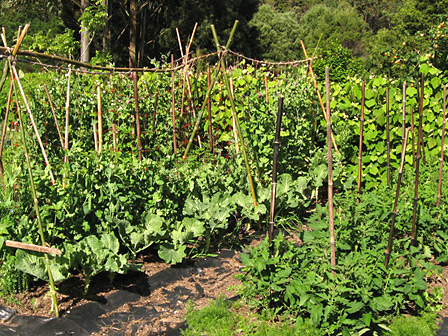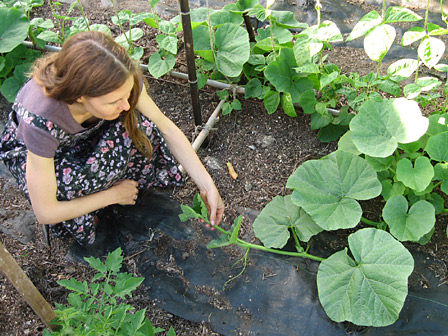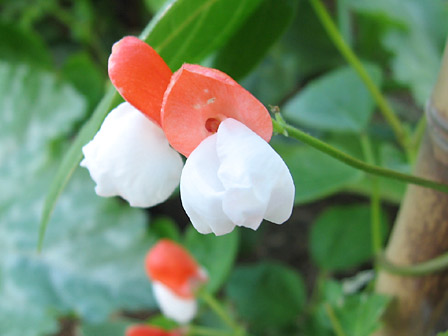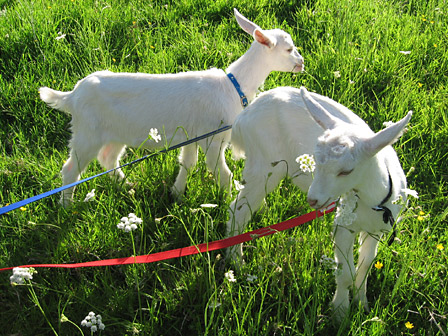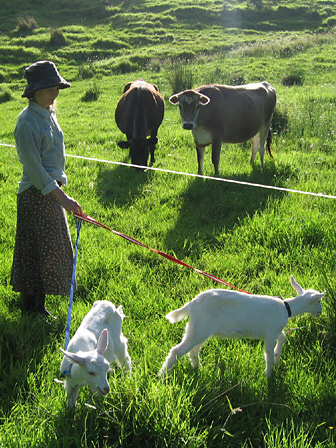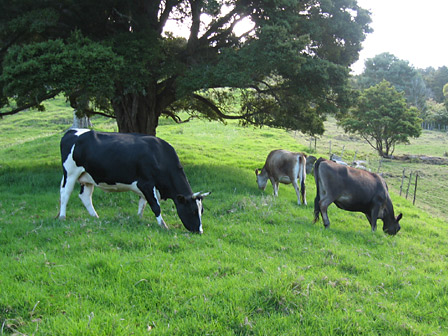I am trying to prune the grapes so that they don’t take over the vegetable beds. This is a bigger job than it ought to be, because we missed our chance to prune them in the winter. We are certainly learning from our mistake, and plan to be better organised next winter! The grapes are now a beautiful, rampant, tangled mess, and I am struggling to sort through it all in order to prune. According to our neighbour, who has a great many grape vines of the same variety as ours, doing plenty of fix-up pruning now will give us the best chance of having a decent crop despite our negligence over the winter.
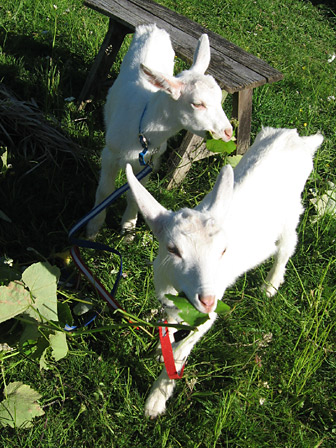
More grape leaves, please
Since I am pruning the grapes, it’s a good opportunity to make pickled grape leaves. Here is the recipe I used to make an inauthentic version of “Podonnip Chorim,” or Grape Leaf Kimchi:
Grape Leaf Kimchi
36 tender young grape leaves, stalks on, washed thoroughly
1 tablespoon sea salt4 tablespoons whey*
2 cloves garlic, minced or finely chopped
1/4 teaspoon chile flakes
2 teaspoons fresh ginger, grated or very finely chopped
Mix whey, salt, and 2 cups of water. Soak the grape leaves in this mixture for about an hour, weighting them down so that the liquid covers them completely.
Roll up 12 of the leaves, all together, and stuff them into a wide mouthed 1 quart (1 litre) preserving jar. Sprinkle with some of the ginger, garlic and chile. Roll up 12 more leaves into another roll. Stuff this roll in the preserving jar on top of the first one. Sprinkle with seasonings. Do the same with the final 12 grape leaves.
Now pour the whey/water/salt mixture into the jar on top of the leaves, so that they are completely covered. Add a little water if necessary. Make sure you leave an inch of space at the top of the jar, as the contents may expand.
Cover the jar tightly and leave at room temperature for 3 days. If necessary, put a weight on top of the leaves to keep them immersed in the liquid. After 3 days, move the jar to the fridge of cold room for storage.
*To make whey, put some plain live yoghurt in a cloth and leave it to drain over a large bowl. The liquid that drains out of the yoghurt is the whey you need for this recipe.
In Korea, they don’t use whey to innoculate their kimchi. Also, I think that they add rice porridge and fish sauce to some kinds of kimchi, but I’m not certain about that! I intend to do some research on this matter, and will be sure to write about it if I end up making fish sauce and rice porridge and adding them to future batches of kimchi. (I think Kevin has some serious concerns about sharing the house with any kind of fermented fish project, so I will have to tread carefully in this matter!)
As well as making one batch of spicy grape leaf pickle, I’ve made a second plainer batch — omitting all the seasonings except for the salt and whey. These can be used for making dolmades.
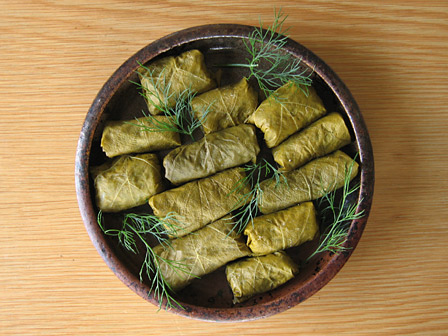
Dolmades
One way to serve the Korean-style pickled grape leaves is with sticky rice, whole lettuce leaves, chile sauce, toasted sesame seeds, and pieces of cooked marinated beef (marinate in honey, garlic, soy sauce, and a little fresh citrus juice). Diners can use the lettuce and/or grape leaves to make little parcels of the other items. Yum!
We humans are not the only Farmlet creatures who enjoy eating grape leaves. The goats love them, too. I tethered them in the yard while I was pruning, so that they could munch to their hearts’ content on discarded grape leaves.
